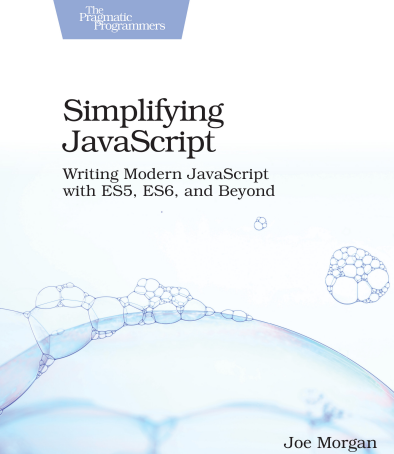The Evolution of Banking in Literature: From Dickens to Today
Banking, with its mystique, power, and peril, has long fascinated writers. From dusty ledgers in Victorian counting houses to high-frequency trades on Wall Street, the banking sector has served as both backdrop and character in its own right. Literature captures the evolution of this complex institution, offering a mirror to society’s shifting views on money, power, and morality.
At Junkybooks, we explore how fiction tackles finance—not just to entertain, but to reveal truths. When it comes to banking, the transformation across literary history is profound. What began as stories of moral caution has evolved into tales of corporate ambition, scandal, and even satire. In this blog post, we’ll chart the evolution of banking in literature, from the pages of Dickens to the high-speed dramas of today’s finance novels.
The Moral Banking of Dickensian England
Banking first entered literary consciousness during the rise of industrial capitalism in the 19th century. Authors like Charles Dickens used banks and bankers as symbols of both progress and corruption. In Little Dorrit, Dickens introduces the fictional Merdle Bank, which serves as a pointed critique of speculative finance and blind trust in wealth.
Mr. Merdle, a revered banker and socialite, is revealed to be operating a Ponzi scheme long before the term even existed. Dickens shows how an entire society, including its aristocracy, is complicit in the illusion of wealth. When the bank collapses, it isn’t just financial ruin that follows—it’s a moral reckoning.
For Dickens, banking was not just an economic function but a reflection of character. Honesty, diligence, and integrity were the traits of a good banker; greed, secrecy, and manipulation marked the bad. Literature from this era often framed the financial world in moral terms, suggesting that economic systems should serve the people—not the other way around.
20th Century: Banking as Ambition and Anonymity
As the 20th century rolled in, banking and finance became more abstract, and so did their literary portrayals. The banker was no longer the shopkeeper with a safe or the kindly town lender. He became a corporate figure—a cog in a vast machine.
In Sinclair Lewis’s Babbitt and John Dos Passos’s U.S.A. Trilogy, banking symbolizes conformity and ambition. These novels present the banker as a symbol of the American Dream: powerful, respectable, but also hollow. Behind the financial success often lies emotional bankruptcy.
Later, the rise of Wall Street fiction introduced a new tone. Novels like Bret Easton Ellis’s American Psycho and Tom Wolfe’s The Bonfire of the Vanities portray bankers not as benevolent public servants but as cold, calculating predators. These stories show how the culture of finance had shifted—from community trust to personal gain.
At Junkybooks, we view this literary shift as crucial. It reflects a world where banking has become increasingly global, faceless, and dominated by data. Fiction captures the anxieties of this transformation and critiques the detachment between financial institutions and everyday lives.
Post-2008: Banking in Crisis and Critique
The 2008 global financial crisis dramatically reshaped the way banking was depicted in literature. The sudden collapse of major institutions, widespread foreclosures, and loss of public trust inspired a wave of novels and memoirs that aimed to make sense of it all.
Adam Haslett’s Union Atlantic paints a vivid portrait of a banker who embodies the arrogance and recklessness that led to the crash. The novel pits financial ambition against moral responsibility, showing how the two are often incompatible in modern capitalism.
Similarly, Jonathan Franzen’s Freedom explores how financial institutions impact families, relationships, and individual purpose. Banking becomes a symbol of excess—of lives measured in portfolios rather than principles.
Perhaps one of the most haunting post-crash novels is Sebastian Mallaby’s More Money Than God. Though a nonfiction narrative, its storytelling reads like a novel, and its analysis of hedge funds reveals how speculative finance has altered the very nature of banking.
This period saw a renewed literary interest in transparency, ethics, and the social consequences of deregulated banking. At Junkybooks, we believe these stories are more than just fiction—they’re tools for understanding our economic realities.
Banking as Technology: The Rise of Fintech in Fiction
Today, the very idea of banking is being redefined by technology. From mobile banking apps to cryptocurrency, fintech has altered how we store, move, and invest money. Literature is beginning to catch up with this digital transformation.
Novels like Dave Eggers’s The Circle and Anna Wiener's Uncanny Valley explore the convergence of finance and technology through startups, data surveillance, and algorithmic decision-making. The banker of today is more likely to be a coder than a clerk. And this new figure brings a fresh set of questions: Who owns our financial data? What happens when machines make the decisions?
In speculative and dystopian fiction, we see futuristic banks powered by AI, where morality is programmed and profit is prioritized above all else. These stories offer provocative visions of where banking might be headed—and whether humanity will keep up.
At Junkybooks, we’re particularly intrigued by this genre, as it blurs the lines between fiction, prediction, and warning. As readers, we’re invited to imagine what happens when the oldest financial systems meet the newest technologies.
Banking and the Individual: A Human Story
Despite all its evolution, one thing remains consistent: the best literature about banking is still about people. Whether it’s the humble clerk in a Victorian counting house or the risk-taking trader in a Manhattan skyscraper, the banker is a human being shaped by systems, incentives, and personal values.
In Joshua Ferris’s Then We Came to the End, we see how layoffs in a marketing firm affect individual psyches. Though not strictly about banking, the novel reflects the ripple effects of financial decisions on working lives. Similarly, Gary Shteyngart’s Lake Success follows a hedge fund manager’s cross-country journey of self-discovery after his career crumbles—a modern take on redemption in the age of finance.
These novels show us that banking is more than a profession; it’s a lens through which we examine identity, ethics, and purpose. At Junkybooks, we cherish these stories because they remind us that behind every transaction is a story worth telling.
Conclusion: A Living Narrative
The evolution of banking in literature is not just a historical curiosity—it’s an ongoing narrative. As banks continue to change, so do the stories we tell about them. From Dickens’s moral fables to postmodern critiques, from financial thrillers to fintech futurism, literature reflects our collective hopes, fears, and experiences with money.
What began as dusty ledgers has become digital code. What once centered on community trust now often grapples with global systems. Yet, through all this change, literature remains a vital space to question, explore, and understand.
At Junkybooks, we believe that fiction and finance are deeply intertwined. One shapes how we live, the other how we imagine. And somewhere in between lies the truth.







